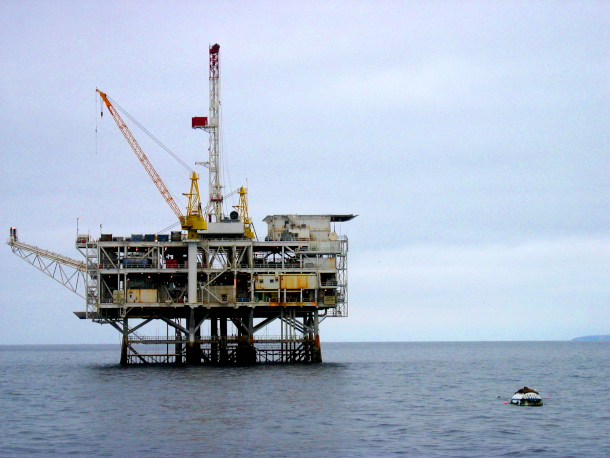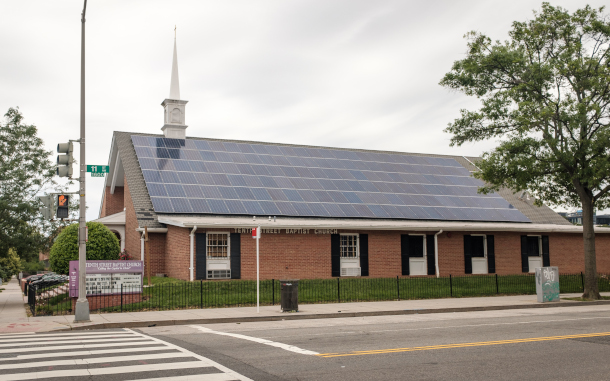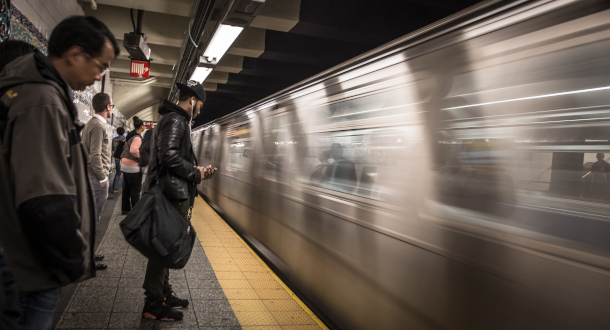Beyond the Headlines
Air Date: Week of October 27, 2023

Activists are debating the fate of old oil rigs, as they have become artificial reefs teeming with life below the surface of the ocean. (Photo: Marianne Muegenburg Cothern, Flickr, CC BY-SA 2.0)
This week, Living on Earth contributor Peter Dykstra joins Host Steve Curwood to divulge how decommissioned offshore oil rigs can become homes for sea life in what are dubbed “rigs to reefs.” Also, churches are putting solar panels on their roofs to engage in “creation care.” And in history they look back to the opening of the first New York City subway line, all the way back in 1904.
Transcript
DOERING: It’s Living on Earth, I’m Jenni Doering.
CURWOOD: I'm Steve Curwood. Joining me now on the line from Atlanta, Georgia is Peter Dykstra Living on Earth contributor who takes a look beyond the headlines for us. Hi, there, Peter. How you doing?
DYKSTRA: Hi, Steve, we're going to start out with a story that's offshore in areas like the Gulf of Mexico and the California coastline that have aging and retired oil rigs. And there's a debate underway whether those oil rigs should be removed, because they're an eyesore, or kept as a marine benefit, because they draw so much marine life around them.
CURWOOD: Peter, you have to admit they are ugly, but you're talking about how great they are for fish, apparently.
DYKSTRA: They're great for marine life from the bottom to the top of the food chain. Everything from micro organisms to small fish, to bigger fish and mollusks, like mussels, also barnacles, all the way up to the big fish and the sea lions that eat them, they can use that oil rig structure as sort of an anchor to build a real paradise and a draw from marine life, which in turn can be a draw for fishermen.
CURWOOD: So maybe there's some value in having these retired oil rigs as artificial reefs.
DYKSTRA: Some folks would rather just see them go, the oil industry gets off the hook by not having to remove the rigs. And also they are able to take credit for an environmental benefit, something that oil companies can rarely do.
CURWOOD: Indeed, Hey, Peter, let's have your gaze look in another corner. What's going on beyond the headlines? What do you see?
DYKSTRA: Well, Creation Care is the name of theory or practice, where churches claim some of the responsibility for addressing climate change and other environmental issues. And one of the things that's happening is that churches with all that roof space in most church designs are embracing solar panels. And some of those churches are able to cover all of their electric bills, or most of them by generating their own solar power.

Some churches are investing in solar panels to cut costs and reduce their environmental footprints. (Photo: ep_jhu, Flickr, CC-BY-NC 2.0)
CURWOOD: So how far is this movement advanced? I mean, solar cells have been around for a long time. But what's different now maybe that they're cheaper?
DYKSTRA: There's so much cheaper, they're getting even more cheap. There are state incentives in some states. There are also organizations like Interfaith Power and Light, that have been promoting the ways that churches can help contribute positively to the climate crisis.
CURWOOD: So churches can play to the light within or the light from above
DYKSTRA: The light within the light from above, and they can keep the lights on.
CURWOOD: Hey, you've got all those history volumes around you. What do you have from the history books today for us?
DYKSTRA: Let's blow the dust off one, and go back to October 27, 1904. New York City's first subway line opens up nine miles long from City Hall in Manhattan, up to 140/5 Street in Harlem.
CURWOOD: Wow, that's quite a distance. That first subway line really expanded in New York ultimately, right?
DYKSTRA: It did counting elevated lines and subway tracks. All over the five boroughs. There's even a Staten Island IRT; New York is largely subway dependent. There's been a love-hate relationship between New Yorkers and the subway. They had a crisis when New York had a financial crisis in the 1970s. But they bounced back and are in better shape than their darker days. New York is a leader in this country, with all those tracks and with millions upon millions of riders every year.

New York City established its first subway line on October 27, 1904. (Photo: Henrik Johansson, Flickr, CC BY-NC-ND 2.0)
CURWOOD: By the way, Peter, since that first line, how have they improved the wait times for those subways in New York?
DYKSTRA: I gotta go Steve. My train is here.
CURWOOD: Peter Dykstra is a contributor to Living on Earth and we'll talk to you again real soon.
DYKSTRA: All right, Steve, thanks a lot. Talk to you soon.
CURWOOD: And there's more on these stories at the living on Earth website. That's loe.org.
Links
Living on Earth wants to hear from you!
Living on Earth
62 Calef Highway, Suite 212
Lee, NH 03861
Telephone: 617-287-4121
E-mail: comments@loe.org
Newsletter [Click here]
Donate to Living on Earth!
Living on Earth is an independent media program and relies entirely on contributions from listeners and institutions supporting public service. Please donate now to preserve an independent environmental voice.
NewsletterLiving on Earth offers a weekly delivery of the show's rundown to your mailbox. Sign up for our newsletter today!
 Sailors For The Sea: Be the change you want to sea.
Sailors For The Sea: Be the change you want to sea.
 The Grantham Foundation for the Protection of the Environment: Committed to protecting and improving the health of the global environment.
The Grantham Foundation for the Protection of the Environment: Committed to protecting and improving the health of the global environment.
 Contribute to Living on Earth and receive, as our gift to you, an archival print of one of Mark Seth Lender's extraordinary wildlife photographs. Follow the link to see Mark's current collection of photographs.
Contribute to Living on Earth and receive, as our gift to you, an archival print of one of Mark Seth Lender's extraordinary wildlife photographs. Follow the link to see Mark's current collection of photographs.
 Buy a signed copy of Mark Seth Lender's book Smeagull the Seagull & support Living on Earth
Buy a signed copy of Mark Seth Lender's book Smeagull the Seagull & support Living on Earth

